16 Essential Tips for Camping in the Rain
Camping is an exciting way to enjoy nature, whether for a weekend or a longer trip. But we all know that camping also means facing unexpected weather, and sudden summer rainstorms can hit out of nowhere. That doesn’t mean your adventure has to end! With the right preparation and gear, you can stay comfortable and safe, even when the weather turns wet. Here are my top tips for camping in the rain so you can enjoy the experience and make the most of it.
Tips for Camping in the Rain
To stay dry while camping in the rain, follow these tips:
1. Protect your things
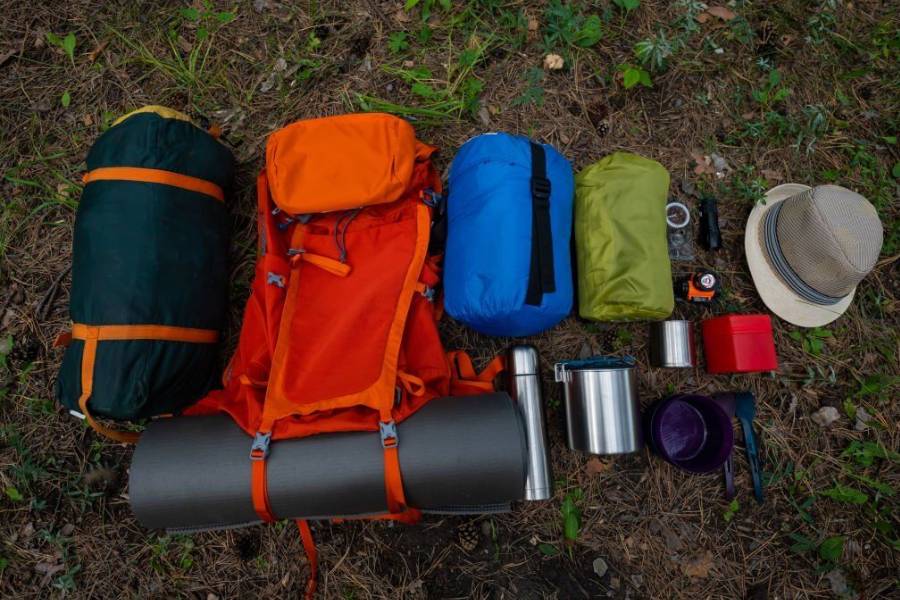
If you’re like the rest of the world, you probably have a million plastic bags at home. Luckily, they are perfect for waterproofing your precious things. You have to put your essentials in a plastic bag and they will protect your valuable gear just like any other expensive waterproof bag.
2. Invest in a quality tent or tarp
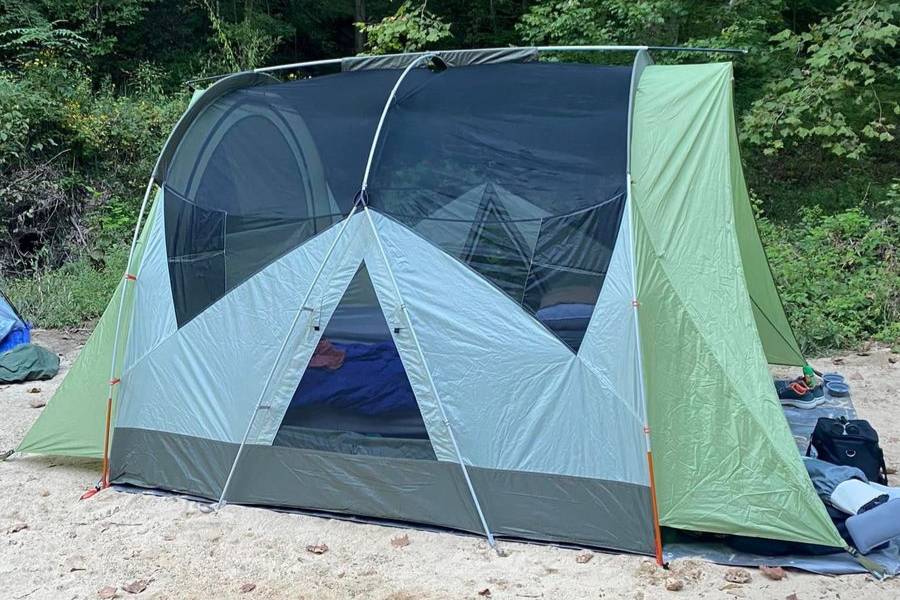
To protect yourself from the rain, you should mount a tarp. If possible, put the tarpaulin across the entire campsite. When choosing the tent or tarp, prefer the one with the ventilation opening. Because it will prevent condensation and allow air circulation. Try to find a tent with a waterproof exterior. You can find different types of tents on the market for multiple uses.
3. Choose the right place
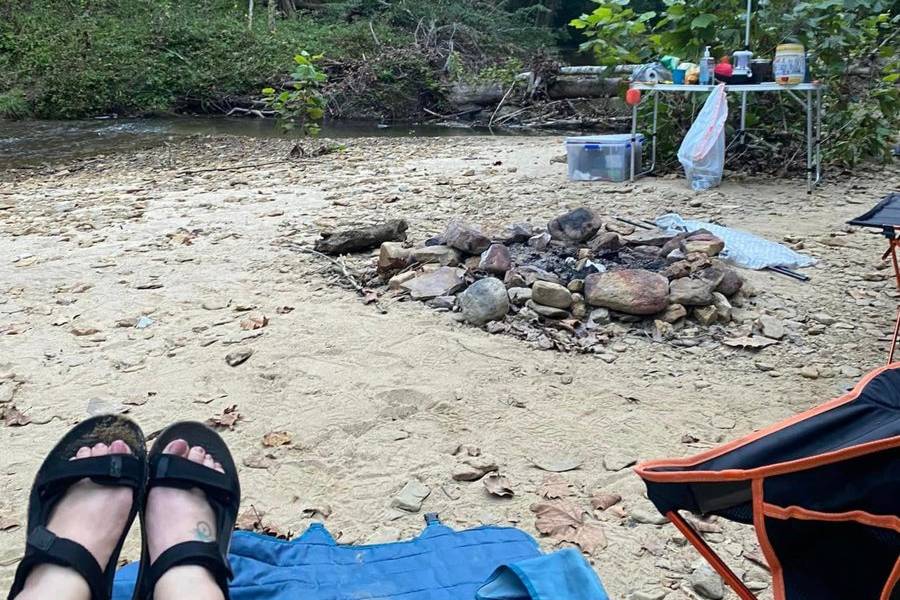
Possible rain can be overcome even before setting up a tent. Choose a slightly elevated pitch so that rain won’t seep into your tent, but away from it. Also, don’t bend your tent under a tree because the leaves keep water that can drip even when it stops raining.
4. Rain can be fun for you
Bad weather doesn’t have to ruin the party. When you are meant to be in a tent, use it as well as you can. Besides basic camping equipment in the rain, you can bring playing cards and board games and have fun during the rainy afternoon.
5. Prepare a dry place to sleep

If it suddenly starts raining and water leaks into your tent or sleeping bag, a hammock can save the day. You can use it as a dry place to sleep because it doesn’t touch the ground. So, if you’re ready to embrace the rain as part of the camping experience, find your ideal spot now!
How to Stay Dry in the Rain
Here are 6 tips on how to stay dry on your camping holiday despite rainy weather…
6. Choose the right campsite
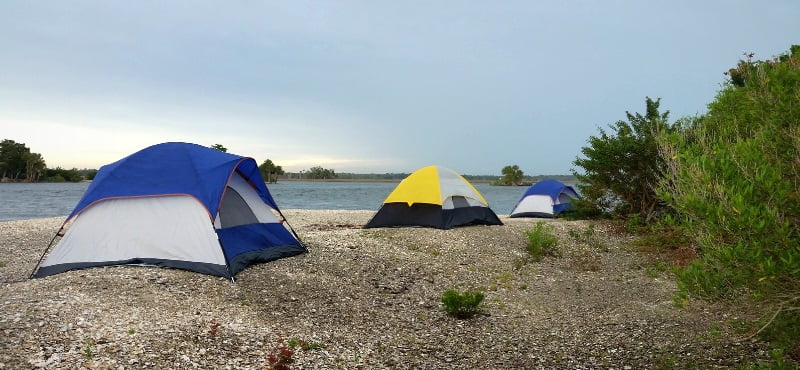
In the mountains, the weather can change within minutes and suddenly you can find yourself in a downpour. Here are a few tips on how you can protect your tent from the rough seas:
- Always seek a flat, slightly elevated spot, irrespective of the rain forecast.
- Avoid holes and depressions. Otherwise, the tent will quickly be underwater.
- Keep your distance from creeks, which can turn into raging rivers in heavy rain.
- Pitch your tent away from trees to prevent falling branches during rain.
- Place the tent entrance on the leeward side to minimize rain entering when opened.
- Choose campsites near toilets and showers to stay dry and comfortable.
7. Set up your tent correctly
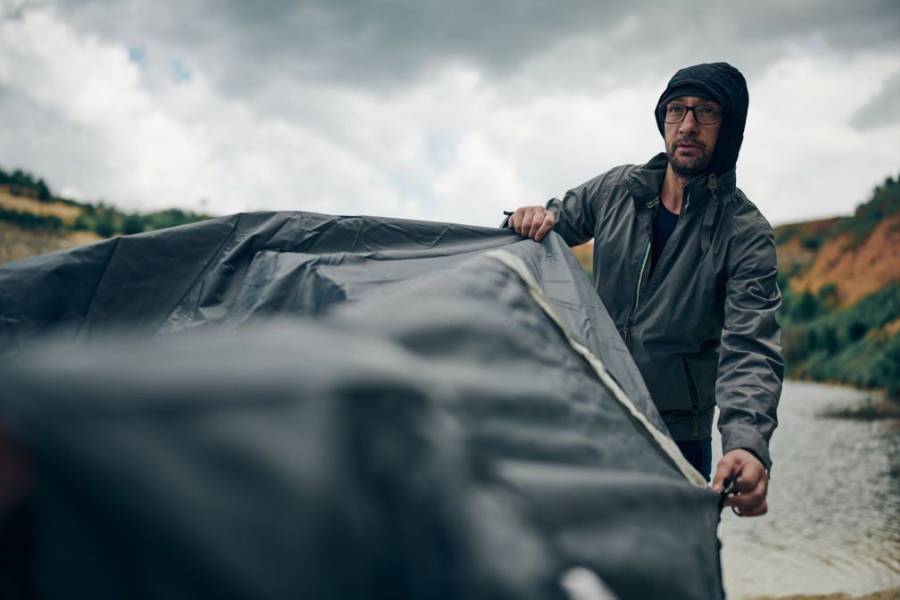
Choosing the right campsite isn’t enough; the setup of your shelter plays a crucial role in ensuring a dry, restful night. To avoid waking up in a mini deluge, make sure to prevent sagging walls on the flysheet. Properly tighten the guy ropes to create adequate tension on the tent roof and side walls. Ensure the inner tent doesn’t touch the outer tent at any point, and anchor the pegs securely into the ground. Again and again, hit the rainwater from the inside of the tent walls.
8. Protect the tent floor
A simple trick that can make a big difference is to use a large tarpaulin or groundsheet between the tent floor and the ground. This barrier protects against unwanted moisture and should be several millimeters thick to prevent dampness in your sleeping mat and sleeping bag. It also shields your tent floor from sharp stones. Just remember, the tarpaulin should not extend beyond the tent floor; otherwise, rainwater can collect underneath.
9. Use plastic bags
Even if we are not great friends of synthetic plastics, they help immensely in this case. Large garbage bags or small zipper all-purpose bags protect against moisture in several ways: On the one hand, practical plastic bags protect valuable contents from external moisture.
Rain ponchos are also ideal for keeping your backpack and luggage dry. Electronic devices like mobile phone, camera, smartwatches, batteries, etc. can be stowed away waterproof in zipper bags in the backpack. Food and medication are also better off in small plastic bags. Simply wrap a garbage bag around the firewood, so it will stay dry for later.
10. Wet objects belong in the awning
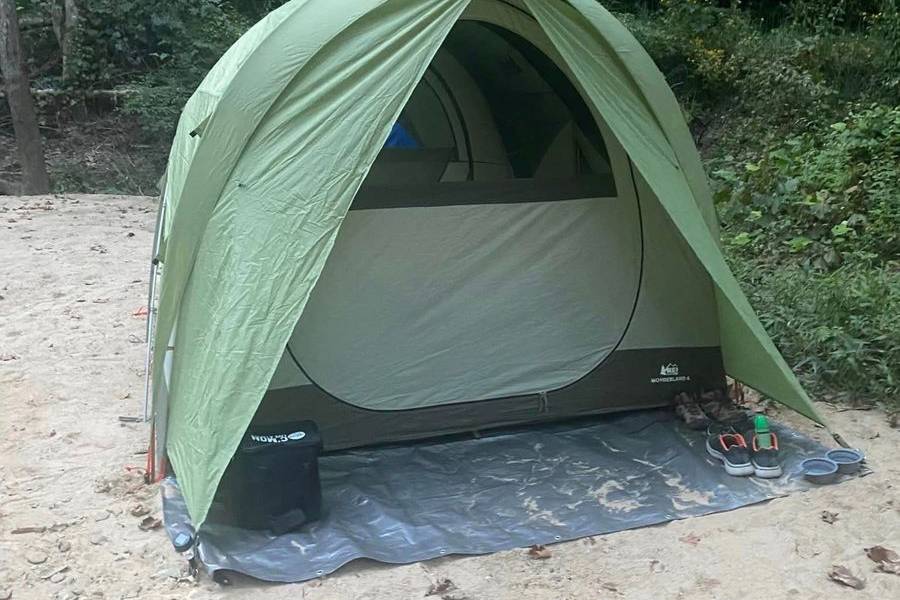
Everything that is wet stays outside such as wet shoes, trousers, jackets and rucksacks. Because this is the only way to prevent condensation from forming in the inner tent. Hang up wet clothing and equipment in the awning so that they can drain properly. Regular ventilation also prevents condensation from forming inside the tent.
11. Provide ventilation
Regularly opening the ventilation flaps even in heavy rain and storms allows the moist and warm air inside the tent to escape to the outside. In this way, you can prevent the formation of condensation, which can mainly occur on the inside of the tent walls or on the floor.
What to Do at the Campsite When It Rains?
Rainy days with children on the campsite can turn into torture for little campers and a big puddle for parents who have to find a way to pass the time. Let’s see some little tricks to make rainy days camping fun too.
12. Let them have fun in the rain
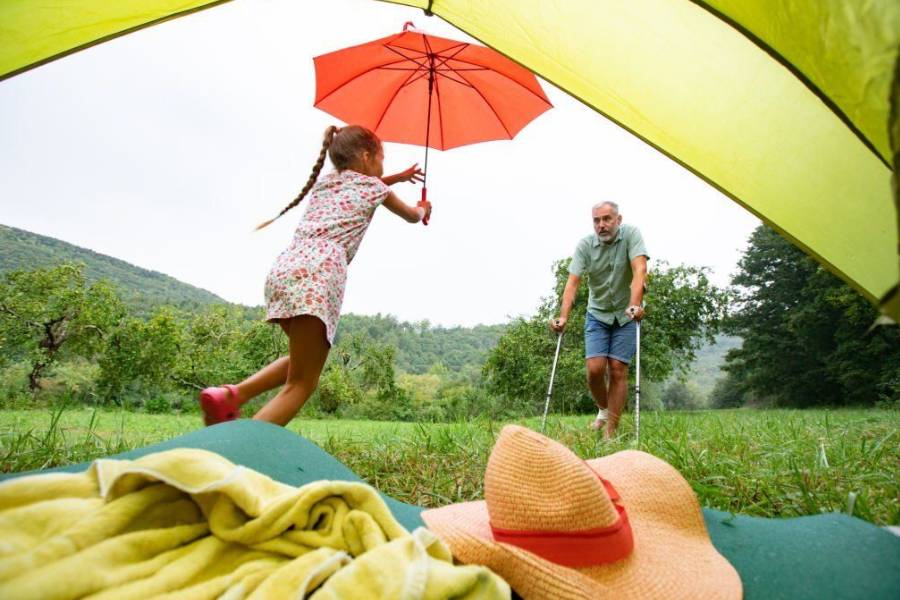
Even if it rains, no one forces you to stay close to a tent to get bored. With umbrellas and raincoats, you can safely go out and start discovering the attractions of the place. Umbrella is the best solution if there is not much wind while raincoats are the ideal solution if it’s windy. When tightly closed, they can keep the rain out of their clothes.
For small kids, it is always good to buy high boots. In this way, they can have fun jumping in and out of puddles. This can be a worthy time pass that can remind us of our childhood. It is an ageless game that can entertain even the most technological child on this planet.
13. Coloring the books
Coloring books are not just a time pass to relax stressed people. On a rainy day, they can become excellent entertainment for children who are bored and who do not want to go outside. Based on your kids’ ages, you can choose simpler or more complex subjects for coloring. Pencils and markers are the perfect colors to fill in the spaces on the pages of coloring books. In the case of drawings for small kids, crayons can also be fine. When they start drawing, they’ll forget about the rain and lose track of time.
14. Box or card games
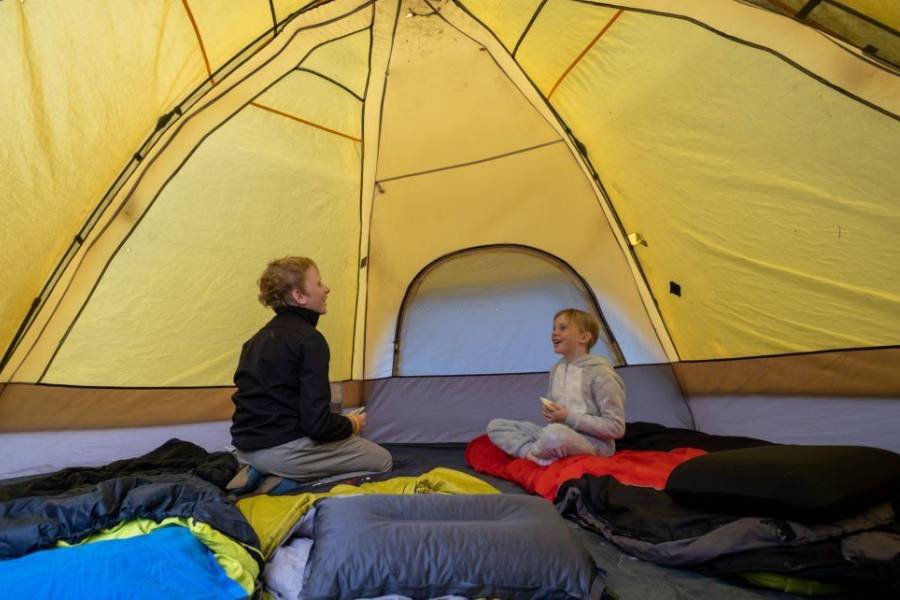
A board game is a great choice for keeping your kids busy and spending time with them at the same time. In order not to take up too much space in the car or tent, it is a good idea to choose a board game that allows kids and adults to have fun for a long time.
If you have a little space in your luggage, a deck of cards or some games are certainly an excellent alternative to boxed games. Because they reach the campsite without their own vehicle.
15. Create an origami
After all, those who go camping always have sheets of paper with them or they can make one out of a box or magazine, Origami is a great pastime that allows everyone to create something, and at the same time, keep their head busy.
If you have no idea what to do with this card, you can search on YouTube. You will find helpful videos and instructions for making simple or complicated origami. Based on your experience and the age of the children, you can decide which model to make them.
16. Books to read
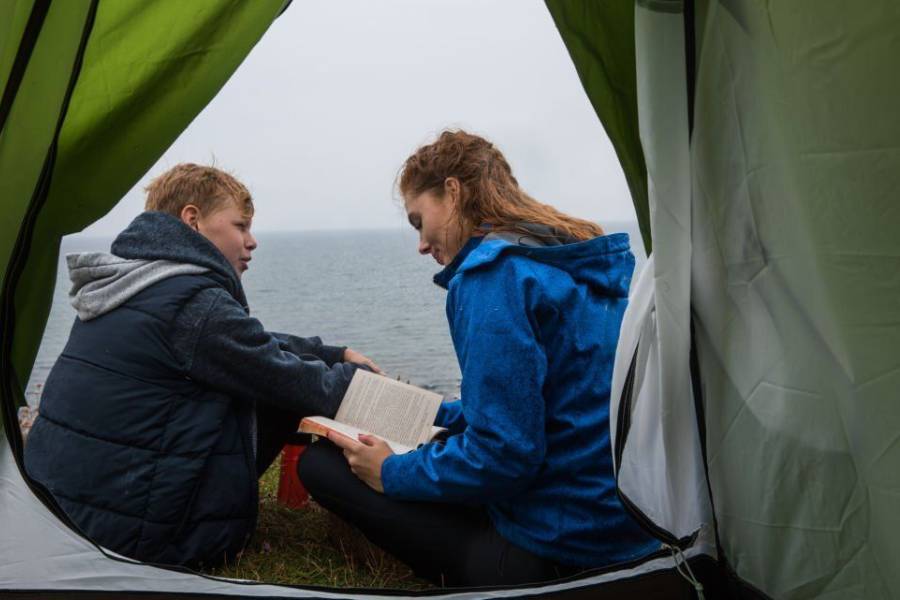
It may seem like a poor choice for kids or young people, but reading a book is always a great companion. This will allow you to let your imagination run wild. For those who forget to bring books from their home, stop at motorway restaurants or supermarkets to buy a couple just in case.
Recommended Steps to Take After Camping in the Rain
Here are a few steps to take after camping in the rain. You should follow these tips to take care of your gear.
- Let your tent, clothes, and sleeping bags air dry before packing them. Once you get home, set it up again to dry completely.
- Wipe off mud and water from your shoes. Remove any insoles or inserts and let them dry separately. Stuff newspaper or paper towels inside your shoes to help absorb moisture.
- If some items are still wet, pack them in a separate plastic bag or waterproof container to prevent them from soaking other gear.
- Take the time to organize your gear, so you know where everything is when you’re ready to camp again.
- Wash and dry your cooking utensils and equipment thoroughly. Make sure to remove any food residue to prevent attracting wildlife.
- Collect all your trash and dispose of it in designated bins or follow Leave No Trace principles if no facilities are available.
- Before leaving, do a final check of the campsite to ensure you haven’t left anything behind.
- If you have a campfire, ensure that it is completely extinguished. Pour water over the ashes and stir them to ensure there are no remaining embers.
- If you’re driving to a new location, make sure you’re prepared for potentially wet and slippery road conditions.
Conclusion
Camping in the rain can test your resilience, but with the right knowledge and gear, it can also be a rewarding experience. As highlighted in the 16 tips above, a little preparation can help you enjoy your trip, even in wet weather. Now, camping in the rain is no longer a challenge for you! If you have any questions, feel free to ask in the comment section below.




